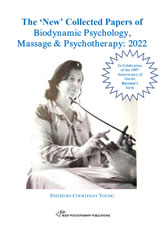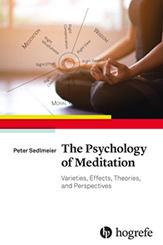Forming your Aging: Porosity and Poetry, Essays in Formative Psychology
I’ve encountered Stanley Keleman’s work many times during my transition from teacher to therapist. And, I can honestly say I always walk away with a deeper sense of me in my entirety, me as embodied energy in human form, shaped as much by thought and reflection as act and reaction. An awareness lingers beyond the momentary meeting that tugs at the corners of my existence as if saying, come on, wake up now, be present in this body of yours and let it inform you just as you inform it.
The 10 Best-Ever Anxiety Management Techniques: Understanding How Your Brain Makes You Anxious &...
In the Second Edition of her book, Dr. Margaret Wehrenberg revisits her 10 techniques for dealing with anxiety. She also revisits the companion workbook that provides activities to guide implementation of the techniques. These books are very accessible, even with the dispersed neuroscience throughout; they also have the advantage of catering to a wide audience including, but not limited to, those who are participating in psychotherapy. Her 10 techniques offer various ways to manage three arenas in which anxiety manifests itself: the body, the mind, and behavior. The workbook offers several, different ways to make the managing of anxiety actionable and consistent. By taking this two-pronged approach, Dr. Wehrenberg captures a large swath of information and applies it thus making her books a potential one-stop-shop for anxiety management.
To fully appreciate the workbook, one must first read the technique book that serves to explain, in depth, what they are, why they work, and how to use them. Utilizing developments in neuroscience, Dr. Wehrenberg updates her 10 techniques by refining those at the forefront, providing new research-based evidence for them, and clarifying how they should be used (I).
Clinical Applications of Polyvagal Theory: The Emergence of Polyvagal-Informed Therapies
What happens when a question sparks a search? When a curious mind latches onto a quest to find answers that make sense, not just...
Meditations on Self-Discipline and Failure
William Ferraiolo’s newest book is written in the style of philosophical approach based on the Stoics. While the word ‘stoic’ means to endure pain and suffering without complaining or showing your feelings, a Stoic, with a capital S, dates back to 300 B.C. when someone named Zeno founded Stoicism, a systematic philosophy that taught people that they should be free from passion, unmoved by joy or grief, and that they should submit to unavoidable situations in life without complaint.
Trauma-Sensitive Mindfulness
If we put blinders on, if we ignore the entirety of a person’s experience, including the impact of our own background, our own sense of have and have not, we are setting up yet another dysfunctional experience.
Quickies: The Handbook of Brief Sex Therapy
Despite the obvious benefits the world of psychotherapy has brought into both individual and communal lives, many cultures still consider therapy taboo. The action of attending therapy is misunderstood and often maligned: going to a shrink is for the crazies, seeking out professional help signifies inability for self-sufficiency, deviating from a biopsychosocial norm from translates as if you are broken. Surpassing the taboo of therapy itself is that of sexuality. Sexuality alone is a taboo subject—the exploration of one’s sexuality, the preferences and expression of such are hushed, driven into the darkness by a societal dictum that preaches uniformity and singular experience. Discussing one’s sexuality in terms of therapy and biopsychosocial healing can be difficult under the effect of the taboo nature. It is precisely this attitude—the one of taboo avoidance—that Shelley Green and Douglas Flemons combat with a smile in their edited anthology entitled, Quickies: The Handbook of Brief Sex Therapy.
Therapists can and do feel uncomfortable and unqualified to handle sexual discussions with their clients. They often refer clients to a ‘sex’ therapist or a like-focused clinician to have these sorts of conversations. Green and Flemons, however, suggest that therapists encourage active discussions (maintained with professionality and a clinical lens) about sexuality; it is, after all, part of the patient’s development and understanding of their relationships. Quickies reflects just that attitude— encouraging open and integrated discussion throughout the entries.
LGBTQ Clients in Therapy: Clinical Issues and Treatment Strategies
I don’t think it’s ever been easier to be a gay person. This perspective comes from a queer-identifying, twenty-one-year-old, living in New York City who also grew up in Chicago. Despite the news of the decimations of queer men around the world (Chechnya, for example) and strings of phobia and hate- filled rhetoric that stream from our Commander-in-Chief’s Twitter, queer youth, now more than ever, are finding opportunity to not only explore and question sexuality but to discuss and reckon with it. While it is still remarkably difficult to navigate today’s world as a queer person, apps like Grindr and Scruff link gay men to peers just down the block and across the country. Homosexual marriage has been legalized in the United States and non-monogamous partnerships are on the rise. I lived the first few years of my life in fear, ashamed of expressing the queer person that I am, but this cultural shift and increased discussion of non-heteronormative experience has allowed me to explore, question, discuss and reckon with my sexuality to the point where I have shed any associated taboos and am in full embrace and proud of my identity.
Oppression and the Body: Roots, Resistance and Resolutions
Reflecting on their place in the world and how that world effects them, these women set the tone for each contributor by sharing raw, honest, and impassioned presentations of self. Editors Caldwell and Leighton begin the book with an aptly named preface “Who We Are and Why We’re Here,” discussing their experiences in life and the embodied oppressions they have taken on by simply existing as themselves.
Self Help Books: A Genre Unto Themselves
by Nancy Eichhorn
I’m a self-help junkie. I know, the word junkie might connote that I still need help, but the reality is I’ve read...
A Guide to Body Wisdom
Ann Todhunter Brode has focused on the body, mind, spirit relationship as it shapes our physical relationship for more than 40 years. “Your history determines your shape and eventually your shape determines your history,” she writes (pg. 105). Brode is a teacher, therapist, healer, and writer—her articles have been published in Health Source Magazine, Santa Barbara Independent, Huffington Post and our own SPT magazine.














